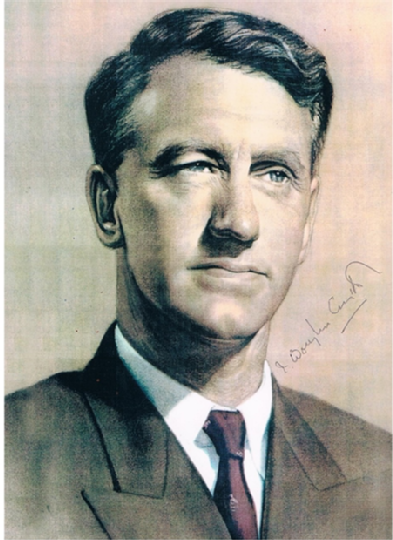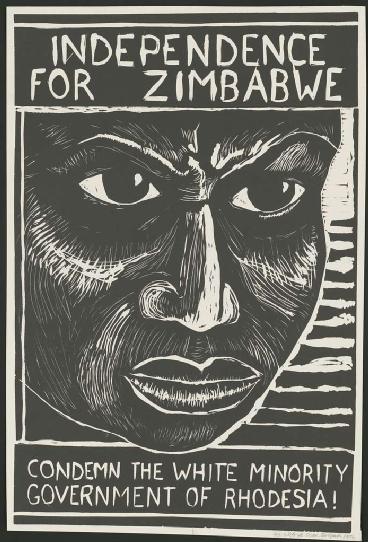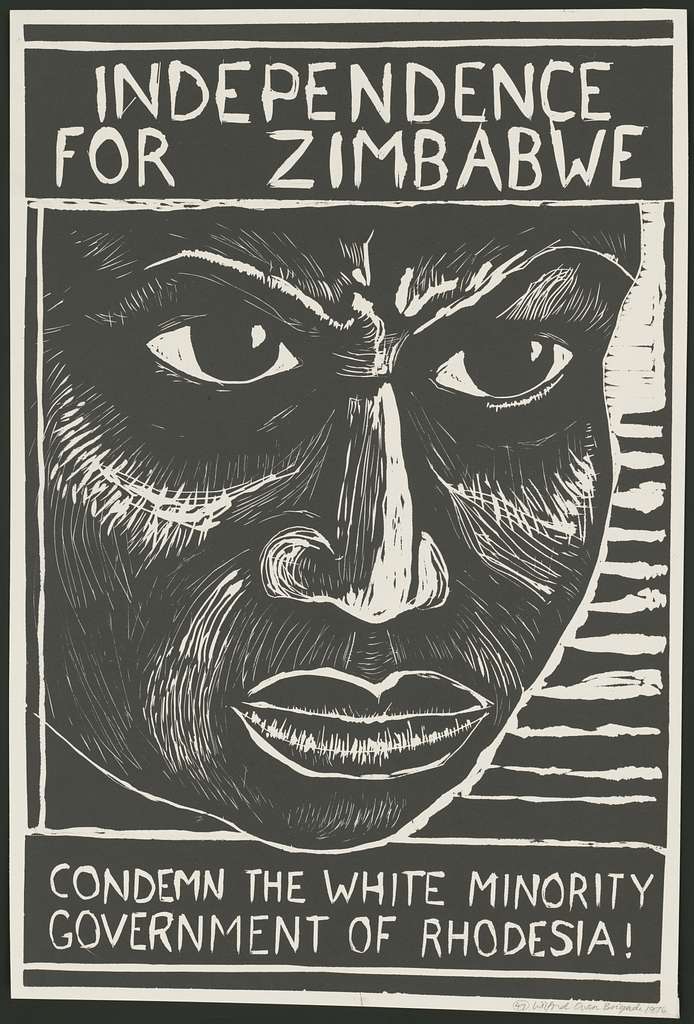The International Far-Right and White Supremacy in UDI-era Zimbabwe, 1965-1979
Published: 27 March 2021 - Niels Boender
A common argument, heard increasingly in right-wing circles resisting the Black Lives Matter movement in the UK, considers that activism is misguided because it is adopted uncritically from the United States. Undoubtedly, the United States has a different history with racism, maintaining effective apartheid in the South until the 1960s. However, Britain until 1979 also contended with an avowedly segregationist element in its population, with complex but significant legacies. This was not in a part of the British Isles itself, but instead on the fringes of ‘Greater Britain’ in Southern Africa. 250,000 ‘Britons’ in Rhodesia (now Zimbabwe) justified white-minority rule, and rebellion against the Crown, using transatlantic discourses of white nationalism which had a significant impact on discussions regarding race and identity in the British metropole. Rhodesia’s propagandists in the 1960s and 1970s cultivated a conception of an embattled white identity, swamped by liberalism, mass immigration and international communism which we have not yet escaped.
Rhodesia’s white minority achieved self-government within the British Empire in 1923 and unlike its southern neighbour, had clung tightly to its British identity. They proudly proclaimed they were ‘more British than the British’. However, by 1962 the settlers were faced with global decolonisation and Rhodesia’s own black majority clamouring for majority-rule and independence. Energised by racial fear and hysteria stemming from the Congo Crisis, the minority elected the radical Rhodesian Front (RF) and its leader Ian Smith. This party explicitly moved away from imperial loyalism to white supremacy, in order to preserve the country’s discriminatory laws and franchise. In 1965 the settlers unilaterally declared their independence (UDI), becoming one of the world’s first pariah states. This was more than a throwback to the imperial past, encompassing an attempt to formulate a newly global white nationalism that sought allies among the burgeoning international networks of anti-communist Cold Warriors.
Figure 1: Portrait of Rhodesian Prime Minister Ian Smith regularly used in propaganda literature. Wikipedia Commons. Figure 2: Zimbabwean propaganda against the Rhodesian regime. Picryl.
With UDI, Rhodesia instantly required economic, military and political support. While the first two were forthcoming, the latter remains under-explored. Critically, Rhodesia’s Department of Information disseminated a wealth of propaganda publications, distributed to so-called ‘opinion formers’ in Europe and North America. These journalists, politicians and businessmen in turn argued against sanctions and promoted Rhodesia’s vision of anticommunism in Africa. In Britain, their key advocates were the Conservative Monday Club, a group of extreme right-wing Conservative MPs. They attacked the Labour government’s sanctions on Rhodesia as reflective of ‘semi-communist’ influences. Criticism was aimed mainly at the figure of Harold Wilson, while Africa to the north of Rhodesia was said to have fallen en masse into ‘one-party tyranny’.
Many members of the Monday Club also found homes in the fringe think tank, the Western Goals Institute. In the 1980s the Institute employed former Rhodesian propagandist Harvey Ward, as well as the current UKIP leader Neil Hamilton, while maintaining international links with Jean Marie le Pen and a cast of European neo-fascists and right-radicals. Moreover, the National Front and its predecessor, the League of Empire Loyalists, were centrally involved in spreading pro-Rhodesian discourses. This included fighting anti-apartheid activists in front of Rhodesia House (the present Zimbabwean Embassy) on the Strand and combining pro-Rhodesian propaganda with Powellite anti-immigrant rhetoric. The right-wing press cultivated pro-Rhodesia sentiment, emphasising ‘kith and kin’, the notion that white Rhodesians were Britons betrayed by the Labour Government to ‘afro-asiatic’ communism. The Daily Express presented the Rhodesian High Commissioner Brigadier Andrew Skeen, as a ‘hero… Britain no longer wants’. Rhodesia itself cultivated these connections, encouraging white Rhodesians to send pro forma letters to family members in Britain, calling on them to support Rhodesia publicly or even migrate themselves.

Figure 3: Archetypal pro-Rhodesian cartoon, Rhodesia Herald. http://rhodesia.nl/
The right-radical networks that white Rhodesia mobilised stretched wider than the old imperial metropole. They also cultivated an international, anti-communist white nationalism. In America, support for Rhodesia coincided with the ‘Goldwater moment’, when Southern white-supremacism combined with settler-populism and McCarthyite fervour to create a new American conservatism. Even though Barry Goldwater was defeated in 1964, groups energised by this moment, like the Liberty League and John Birch Society as well as publications like National Review, latched onto Rhodesia. They saw it as a bastion of anticommunism reflective of the ‘frontier values’ that Civil Rights-era America was losing. Mississippi Senator Eastland, who ‘saw a Red behind every Black’, inscribed this vision onto Rhodesia. He saw ‘an island of stable white minority rule in a sea of Communism, decolonisation, youth protest, and other attacks on the traditional world order’. Moreover, the parallels with America were constantly emphasised. Ian Smith was called, in National Review, ‘Rhodesia’s George Washington’ while Senator Jesse Helms claimed that Americans were lucky that there was no United Nations in 1776 as ‘the American Indian would…be running America today’, in light of UN sanctions on Rhodesia.
Crucially, these discourses did not come out of nowhere. They were actively fostered by Rhodesian publications and an effective lobbying operation in Washington DC. Its greatest achievement was the 1971 Byrd Amendment, which allowed Rhodesian chrome exports to the US. One moment that perhaps indicates the remarkable entanglements of Rhodesia with global white supremacy, was when the man who would eventually kill Martin Luther King Jr., James Earl Ray was caught at Heathrow Airport trying to make his way to Rhodesia. Moreover, hundreds of American Vietnam veterans would fight in Rhodesia’s ‘foreign legion’ against Zimbabwean nationalists in the 1970s.
The quest for practical political support led to the establishment of Rhodesian Information Offices in Washington D.C, Paris, Lisbon, Cape Town and Sydney, creating a new mental map of support and cultivating transnational connections. Charles de Gaulle’s neo-colonial administration supplied Rhodesia with military equipment while the conservative Bavarian premier Franz Joseph Strauss helped Rhodesian officials across the border from Switzerland.
The above illustrates that Britain has had a global relationship with white supremacy in the last half-century, and anti-racists have long-faced accusations of being communist, reverse-racist and unpatriotic. More tropes have survived intact, think only of Katy Hopkins making a documentary about white South African farmers, or Donald Trump warning the South African government to not pursue land reform. Through Rhodesia’s experience and the discourses they produced, we can grasp the manner in which imperial nostalgia was transformed into transnational white nationalism, a discourse that continues to haunt present debates. Unravelling this must be one of the key tasks of global historians today.
Niels Boender is a first-year PhD Student at Warwick, studying Modern African History. He is currently working on the Legacies of the Mau Mau Uprising in Kenya, in a Collaborative Doctoral project with the Imperial War Museum. He also continues to work on the transnational dimension of settler colonialism in twentieth-century Africa. His Twitter handle is @NielsBoender.




